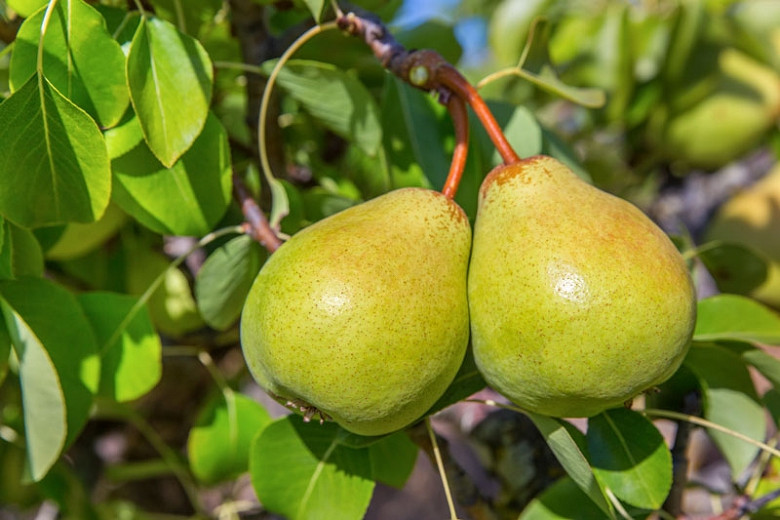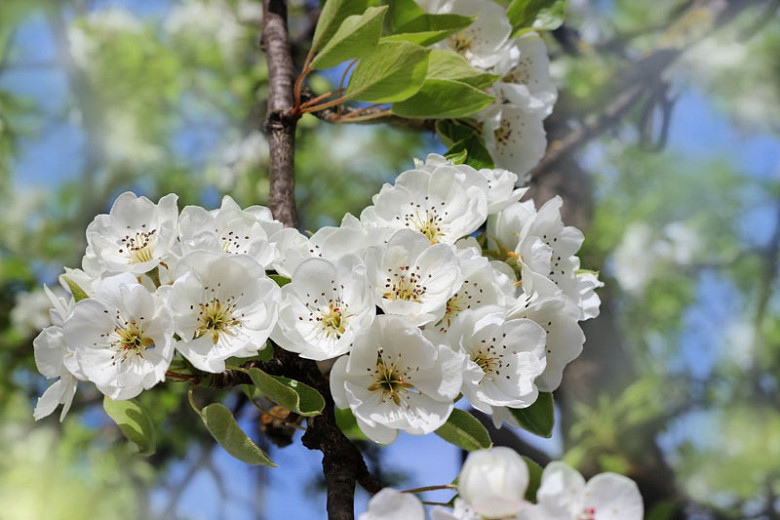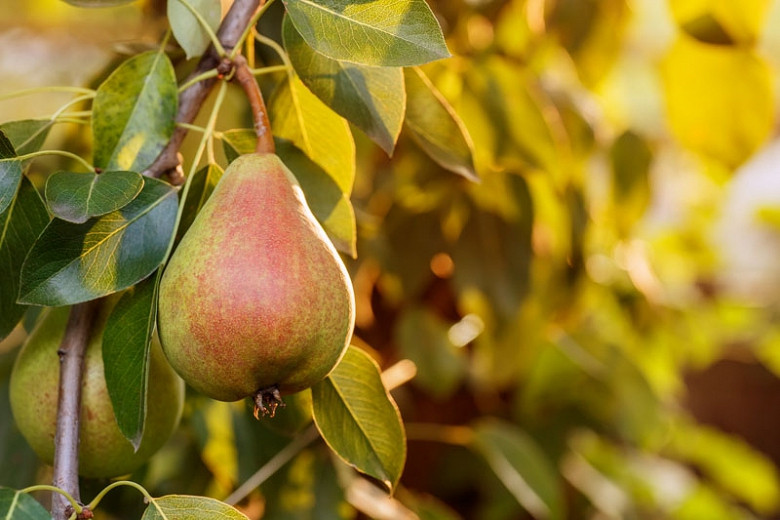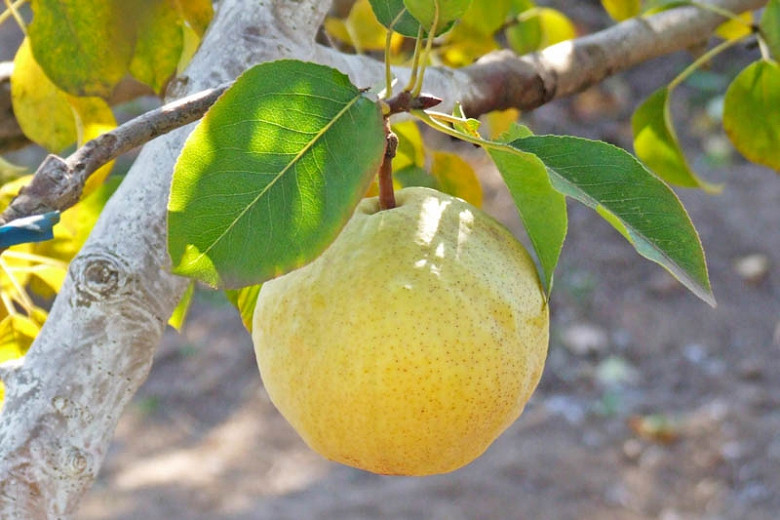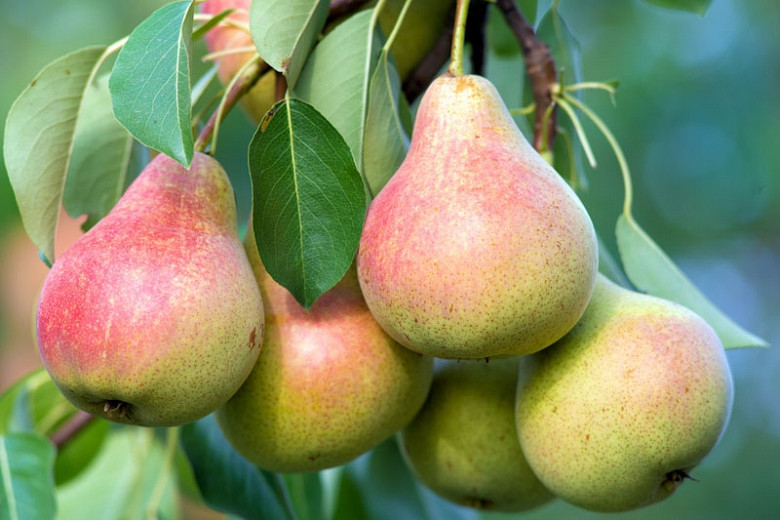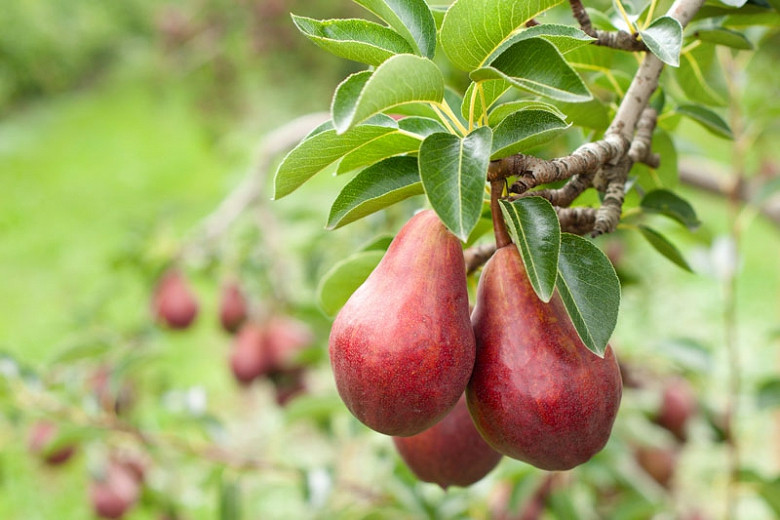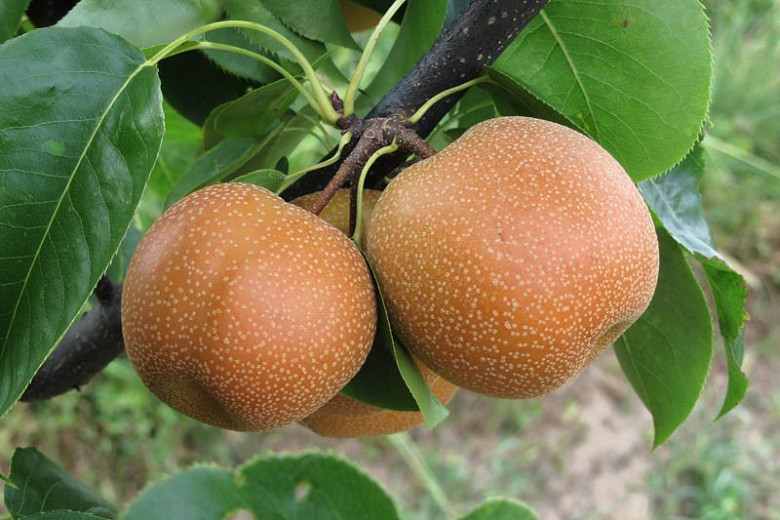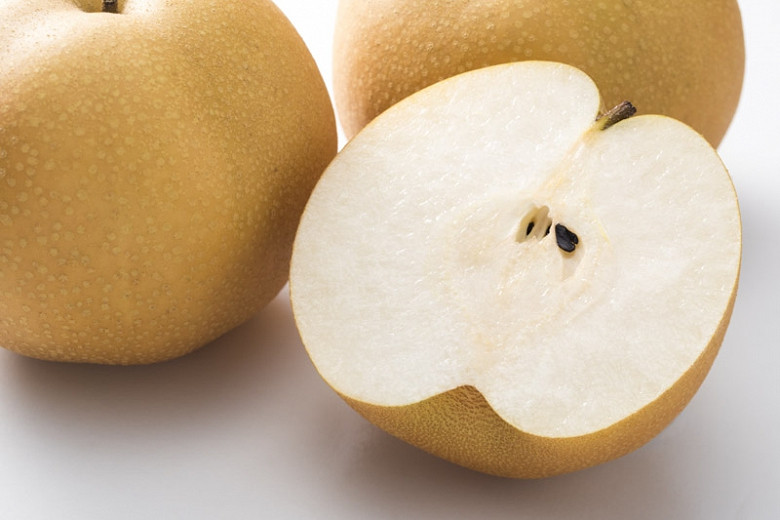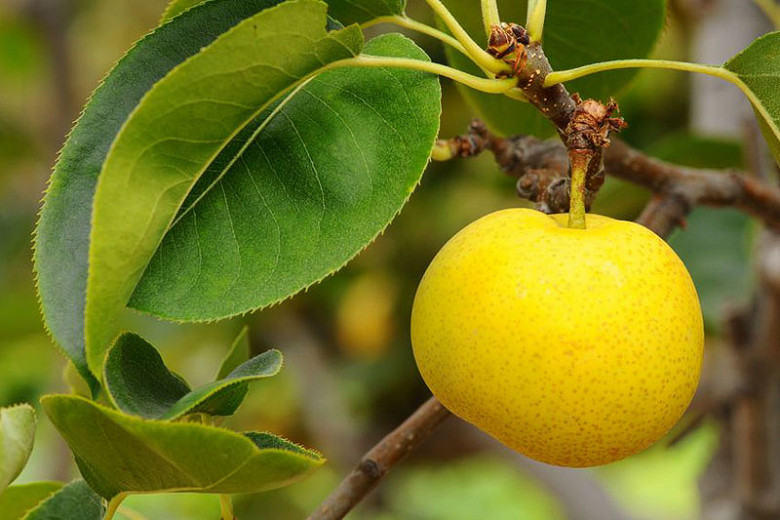Pyrus communis Comice (European Pear)
Considered to be the best-tasting pear, Pyrus communis 'Comice' is a dessert cultivar with a profusion of fragrant, creamy white flowers in mid-season (mid-spring). Draped in clusters along the branches, they are truly a sight to behold. They are followed in the fall by a crop of very large, greenish-yellow pears often adorned with a red blush. They have a very rich flavor and are very juicy, buttery, and perfumed. Comice is self-fertile but requires pollination by a tree of another variety with the same bloom period such as Moonglow or Bartlett. The foliage of elliptic glossy green leaves turns pretty shades of red and yellow in fall. A vigorous pear tree, Comice produces moderate crops, although older trees crop more reliably. It is moderately resistant to fireblight. Beautiful in bloom, handsome in full leaf, heavy with luscious pears, attractive in fall, and picturesque in winter, pear trees are very rewarding additions to the landscape across the seasons.
- Recipient of the prestigious Award of Garden Merit of the Royal Horticultural Society.
- Grows up to 12-15 ft. tall (3-4 m) and 8-10 ft. wide (2-3 m) as a dwarf variety. Grows up to 15-20 ft. tall and wide (4-6 m) as a standard tree.
- A full sun lover, this tree is easily grown in deep, fertile, moist, well-drained soils. Prefers a sheltered, frost-free position.
- Pears should be pruned every year to get the best crop. They also need to be thinned to about 5 in. apart (12 cm) in late spring or early summer if you want to reap the best-quality fruit.
- Keep an eye out for aphids, caterpillars, codling moth, pear blister mite, pear midge and pear, cherry slugworm, pear scab, pear rust, brown rot, blossom wilt, and fireblight.
- Propagate by grafting or chip budding onto a clonal rootstock for fruit; quince rootstocks are usually used. The rootstock used will largely determine the vigor.
Requirements
| Hardiness | 5 – 7 |
|---|---|
| Heat Zones | 5 – 9 |
| Climate Zones | 2, 2A, 2B, 3, 3A, 3B, 4, 5, 6, 7, 8, 9, 14, 15, 16, 17, 18 |
| Plant Type | Fruit, Trees |
| Plant Family | Pyrus – Pears |
| Exposure | Full Sun |
| Season of Interest | Spring (Mid,Late)Summer (Early,Mid,Late)Fall |
| Height | 12' – 20' (3.6m – 6m) |
| Spread | 8' – 20' (240cm – 6m) |
| Water Needs | Average |
| Maintenance | High |
| Soil Type | Clay, Loam, Sand |
| Soil pH | Acid, Alkaline, Neutral |
| Soil Drainage | Moist but Well-Drained, Well-Drained |
| Characteristics | Fragrant, Plant of Merit, Showy, Fruit & Berries |
| Tolerance | Clay Soil |
| Attracts | Butterflies |
| Garden Uses | Wall-Side Borders |
| Garden Styles | Informal and Cottage |
